Coaxial Connectors and adapters
Connectors and adapters are passive electrical components that operate at radio frequencies in the multi-megaHertz range. They are used in transmitting signals of products, like radio, antenna, coaxial cables, surge protectors, etc. Before we go on to discuss the types of connectors and adapters let’s have a look at the basic difference in the gender of your components.
What is the gender of your connector?
Yes, you read that right! most of the RF connectors, adapter, and other plugs are differentiated as either male or female. It is vital that you choose the right type of component for your application.
Female RF connector, commonly referred to as the plug, include a pin at the center. Conversely, the male RF connectors, also known as the jacks, feature a hole where the pin of the female connector could be attached to join the two components.
The gender of the RF connectors is contrary to the common connectors, where plugs are male, and jacks are female. This difference in naming the RF connector is due the fact that the male RF connector usually sits inside the RF female connector for them to be attached.
Jyebao specialises in producing both male and female connectors and adapters.
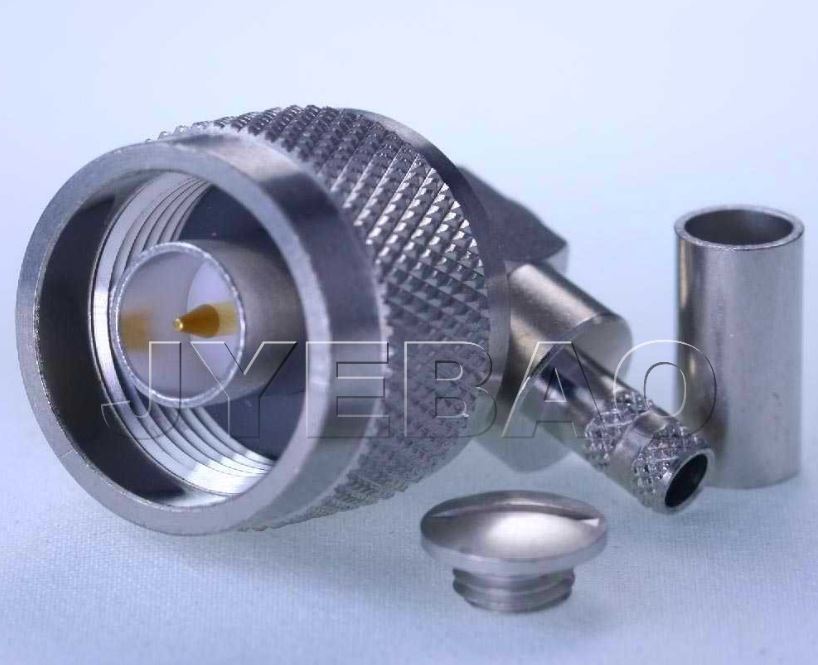
Female RF connector: N-type plug
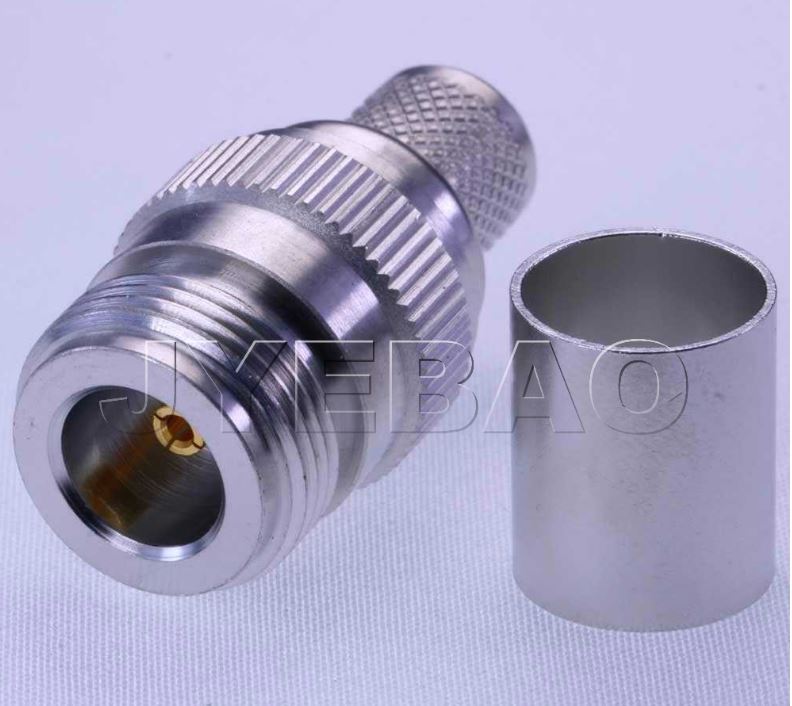
Male RF connector: N-type jack
Connectors:
There are different types of connectors used in RF applications . It is important to choose the right type of connector to fit your device. Jyebao manufacturers high-quality, reliable connectors and can also customise the design to suit your needs, given the volume of each order is OK (100+) units. A detailed description of the types of connectors available, from Jyebao, is given below.
SMA connectors:
SMA connectors are small electrical components whose name is derived from the term “sub-miniature A connector”. These connectors have an operating frequency of 18 GHz and are also suitable for ultra-high frequency. The SMA connectors are well known for their small size and are characterised by their hexagonal shape and have a threaded outer coupling interface.
The SMA connectors are a popular choice and are used in a variety of RF applications, such as radio communication boards, Wi-Fi antennas, microwave systems, mobile telephones, RF isolators and power amplifiers, and some ultra-high frequency system.
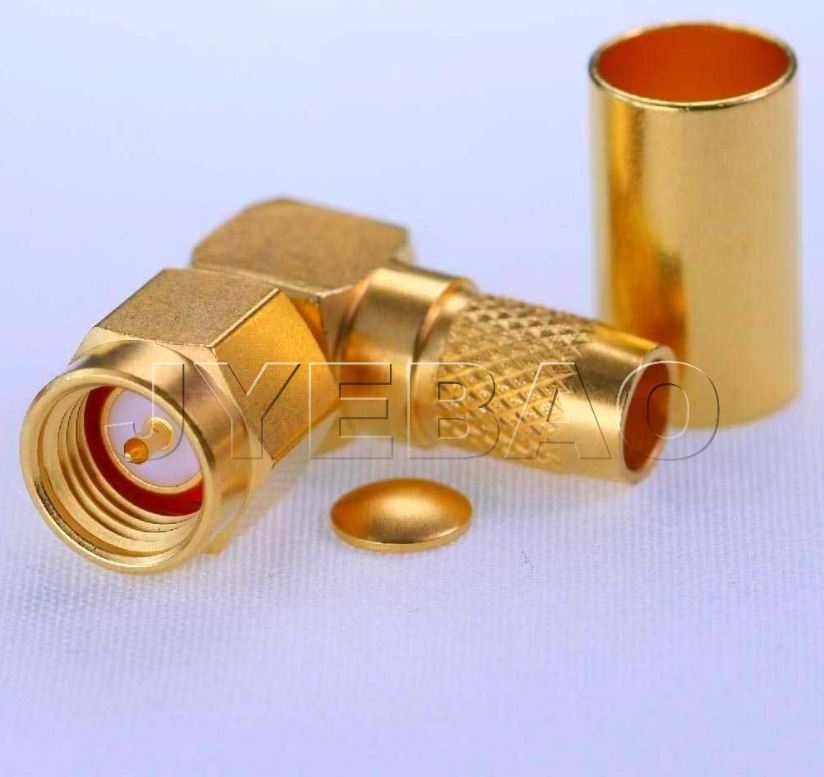
Female RF connector: SMA plug

Male RF connector: SMA jack
Reverse polarised SMA connector:
In reverse polarised SMA connectors, the pin and the sleeve are switched. The male connector has a central hole that is surrounded by a barrel that is threaded on the inside. While the female connector has a central pin and a barrel that is threaded on the outside.
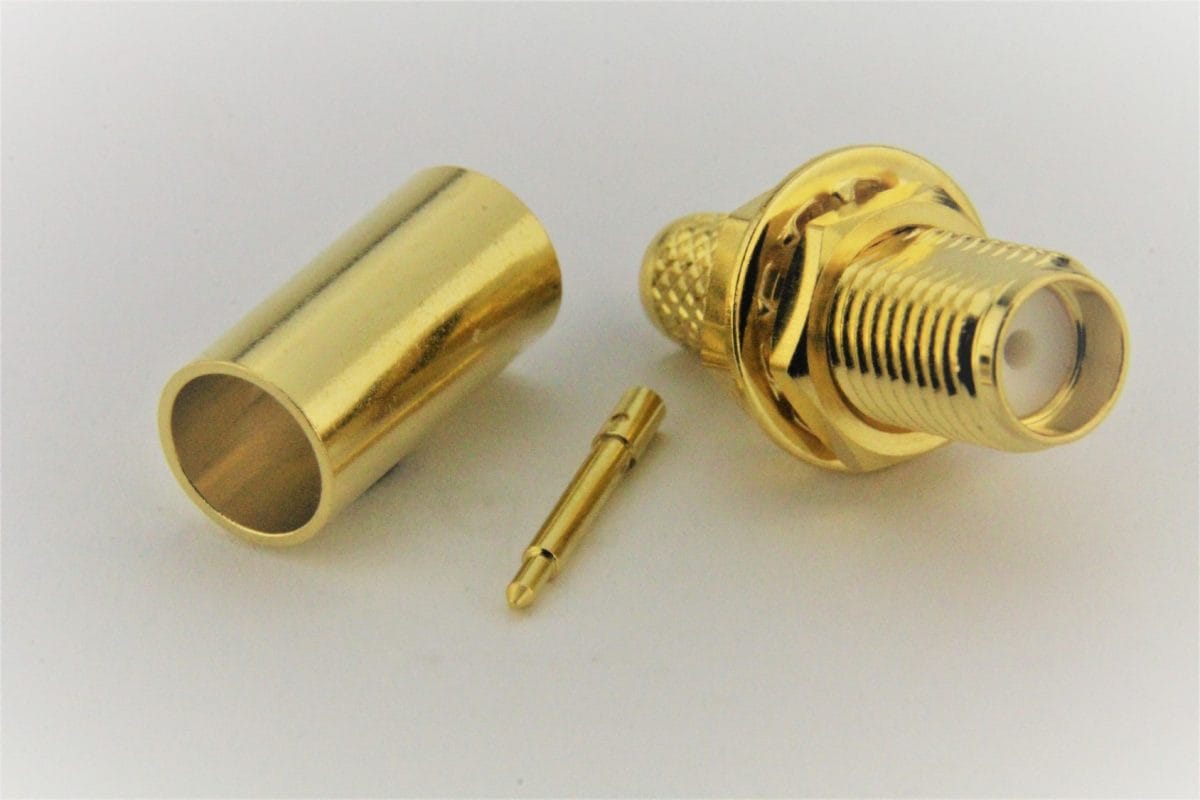
Female RF connector: SMA RP jack
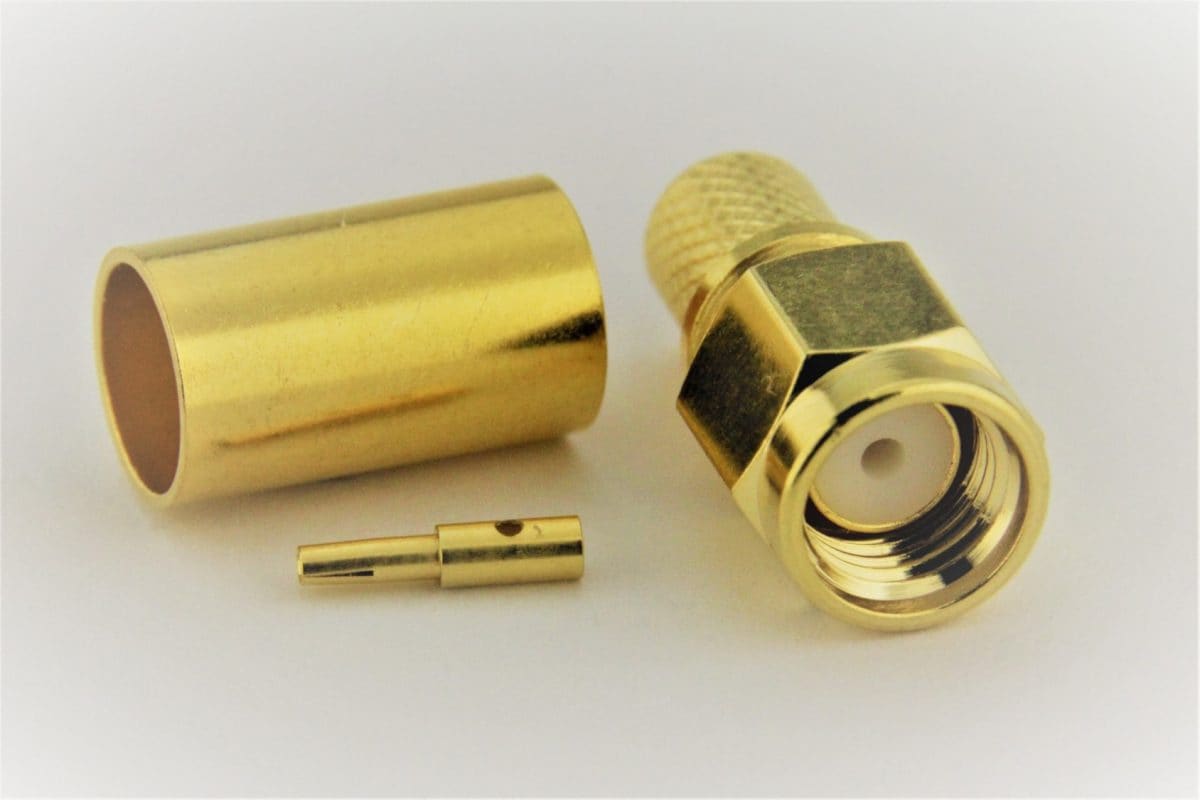
Male RF connector: SMA RP plug
SMB connector:
The name SMB connector comes from the term “sub-miniature version B connector”. This connector is popular for the ability to swiftly mate with a sub-miniature RF connector and operates frequencies up to 4 GHz. When two connectors are connected, they snap-fit together and do not require nuts to be tightened. The SMB connectors are available in either 50 ohm or 75 ohm.
SMB connectors are used within inter-board or assembly connection within equipment and are commonly used in microwave assemblies. They are also used in other appliances, such as antennas, base stations, radio boards, and GPS.
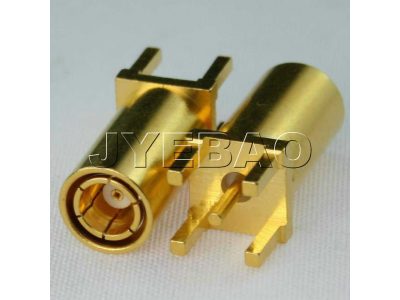
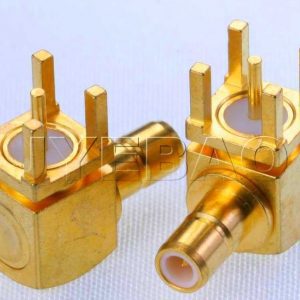
N-type connectors:
The N-type connectors have an operating frequency of 11 GHz and are larger compared to other types of connectors. This component has a threaded coupling interface to ensure that it mates correctly.
They are more robust and provide a stable connection. For this reason, they are used in heavy-duty communication equipment’s such as radar systems, satellites, and matched impedance applications.

Female RF connector: N-type plug

Male RF connector: N-type jack
BNC connectors:
BNC connectors are one of the most popular RF connectors used. They have an operation frequency of up to 4 GHz and are available in either 50 ohm or 75 ohm impedance. The compression gland type of BNC connector has a centre solder pin. There is a nut at the rear of the connector that controls the expansion of the compression gland, which holds the braid and the sheath of the cable. This connector can accommodate a range of cable sizes and does not require any tools for assembly.
The BNC connectors are the most popular RF connector and are used for RF test equipment, receivers, transmitters, video signals, radio, and other low frequency RF application.
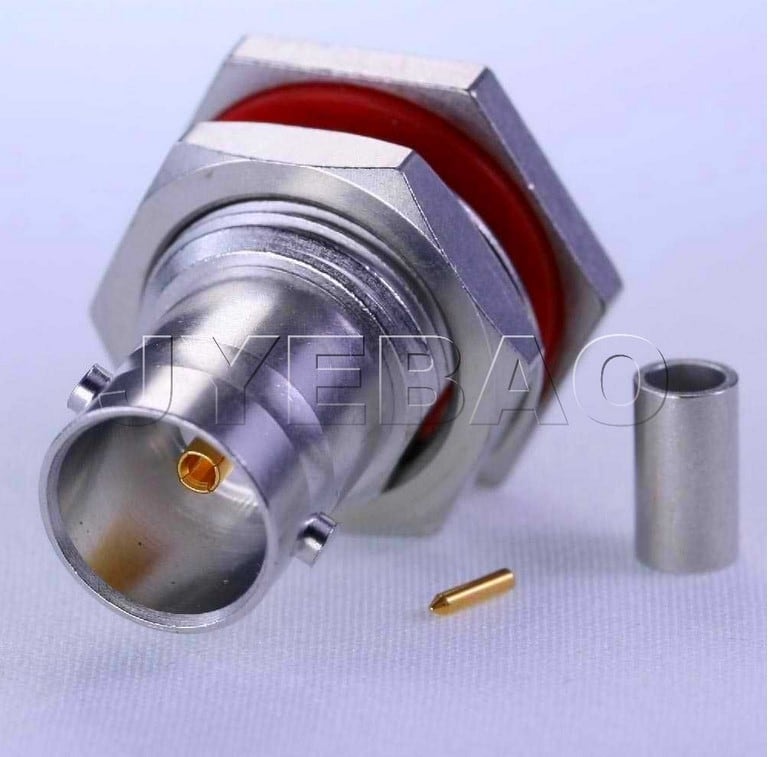
Female RF connector: BNC plug
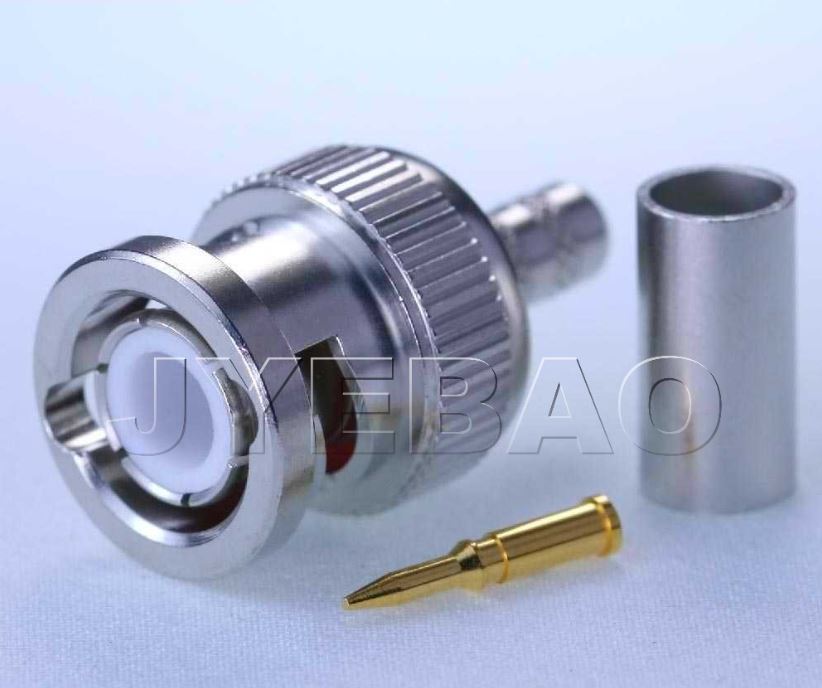
Male RF connector: BNC jack
TNC connectors:
TNC connectors are a threaded version of BNC connectors and hence get their name from the term ” threaded Neill Concelman”. This connector has shown better performance compared to BNC connectors.
TNC connectors operate up to a frequency of 11 GHz. TNC comes in a variety of different versions, like connectors, adapters, and attenuators. The TNC connector has a pannel mounting assembly with a single connector for the coax center. The connector is bolted using a single nut via the panel for the purpose of earthing. Large washers can also be used to provide an earth connection directly to the connector. The TNC connector is commonly used in radio and wired applications.
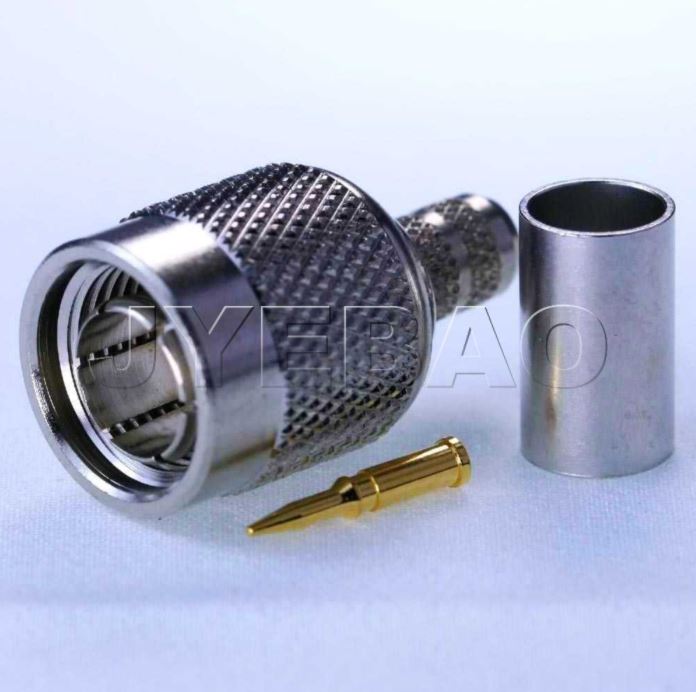
Female RF connector: TNC plug
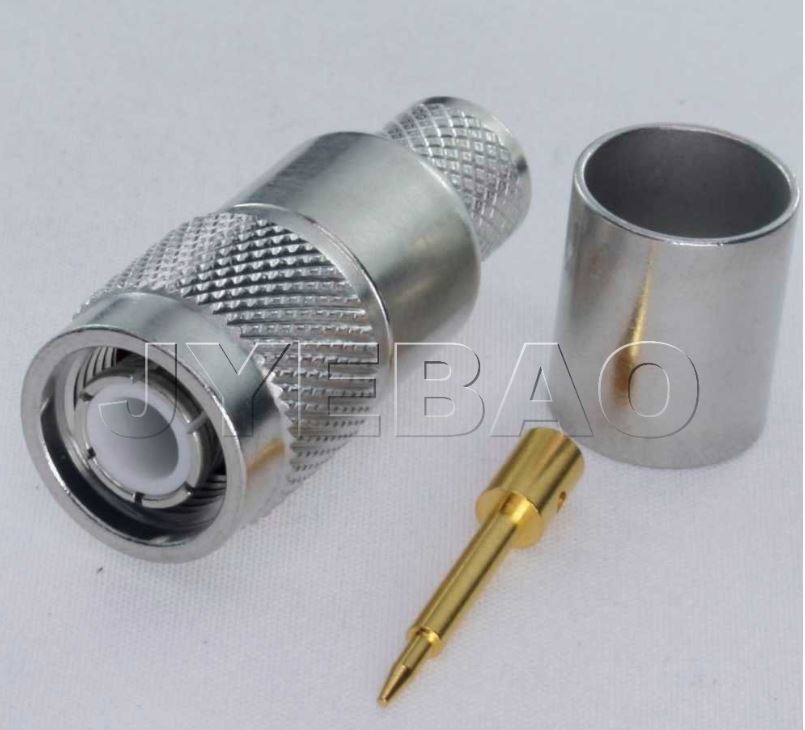
Male RF connector: TNC jack
FME connectors:
FME connectors are commonly used in mobile phones and wireless broadband antennas. These connectors have an impedance of 50 ohm and can work up to 2 GHz frequency range. The FME connectors are characterised by small connector diameter and can easily fit in tight places.
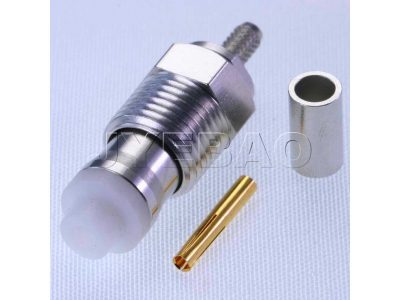
Female RF connector: FME plug
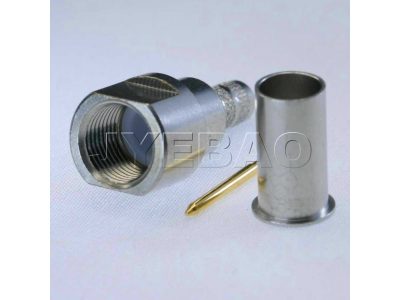
Male RF connector: FME jack
MXC connectors:
MXC connectors also known as micro coaxial connectors are commonly used in cellular telecommunications, data telemetry, external antenna, and GPS receivers.
MXC connectors are smaller than SMB connectors although they have the same inner contact and insulator dimensions. The contact surface of MXC connectors is usually gold-plated. The MSX connectors have an impedance of 50 ohm and provide connectivity up to 6 GHz frequency.
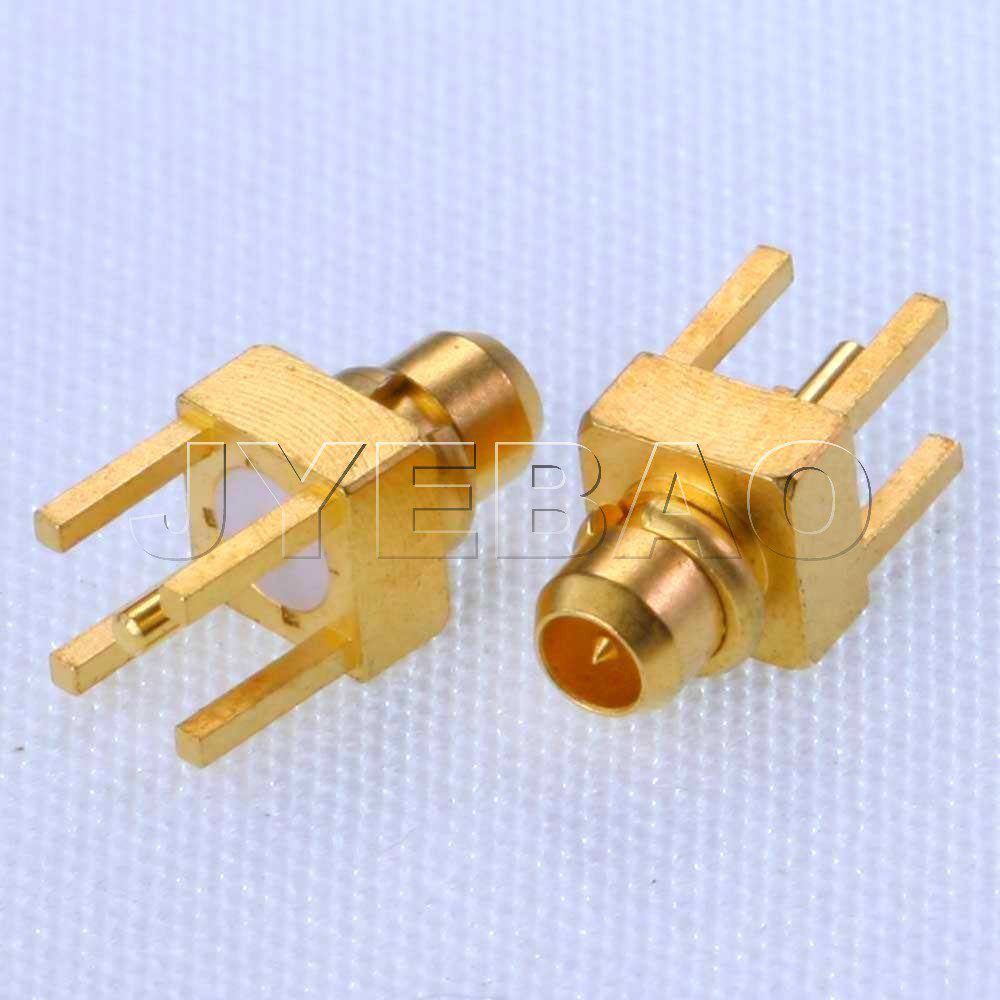
Female RF connector: MXC plug
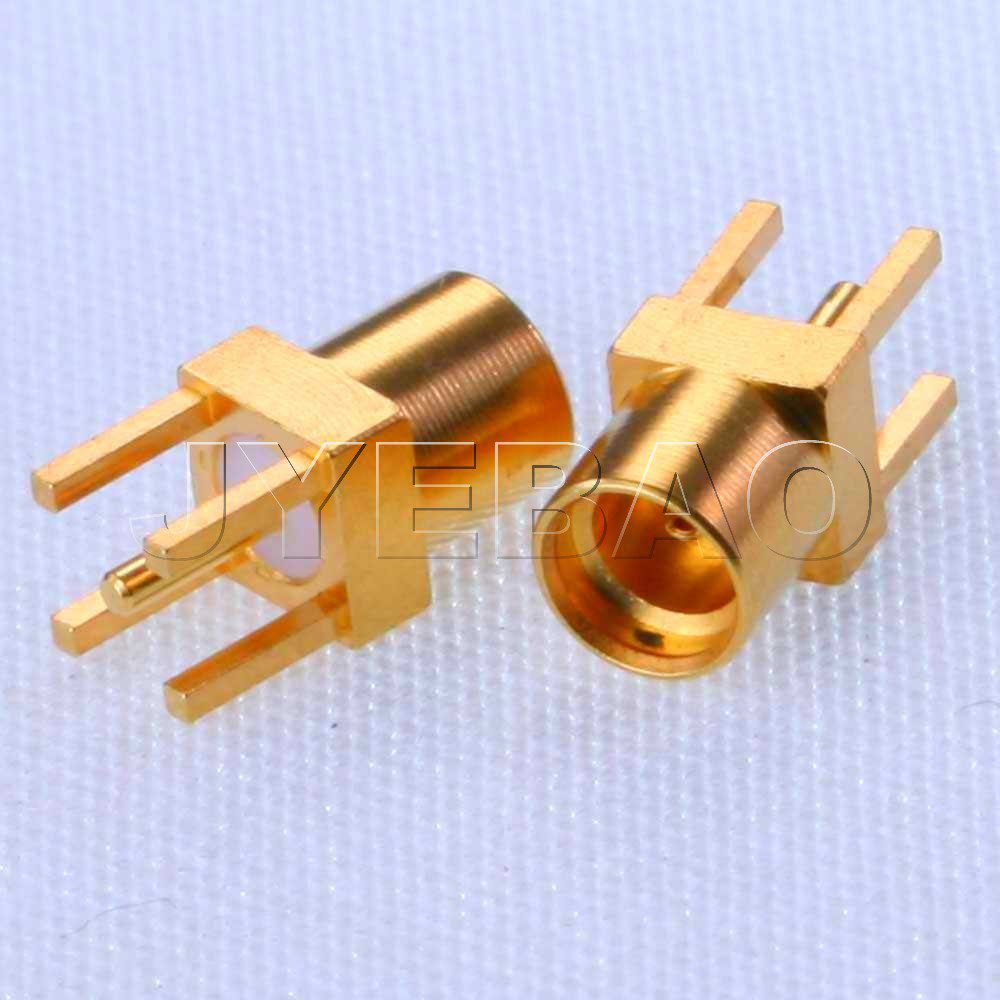
Male RF connector: MXC jack
SHV connectors:
SHV connector also known as safe high voltage connector is commonly used for terminating a coaxial cable. This connector is characterised by its thick and protruding insulators and uses a bayonet mount, like BNC connectors. The SHV connectors are generally used in high voltage applications up to 5000 volt DC.
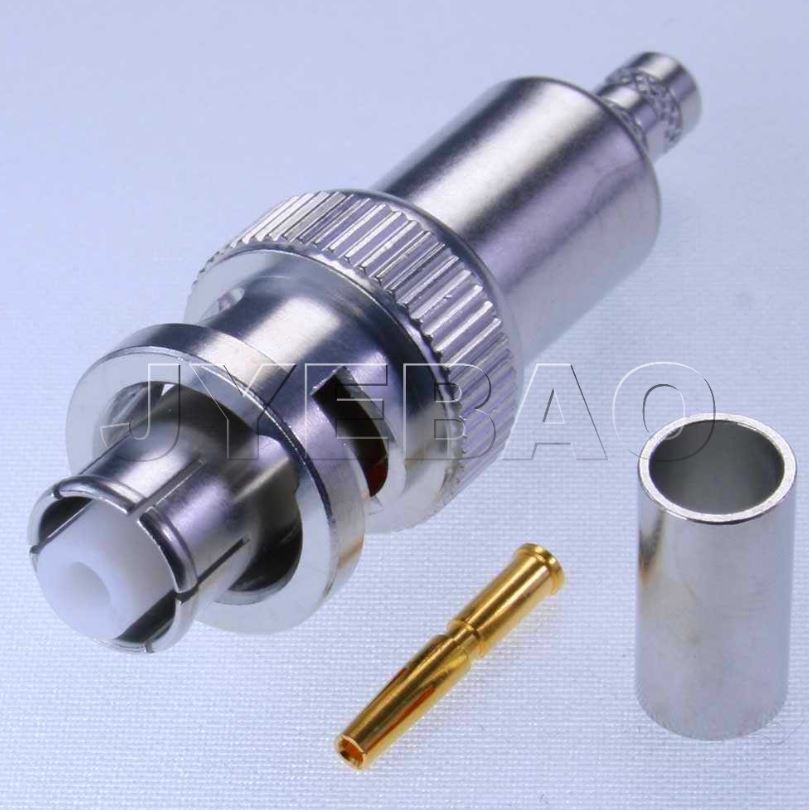
Female RF connector: SHV plug
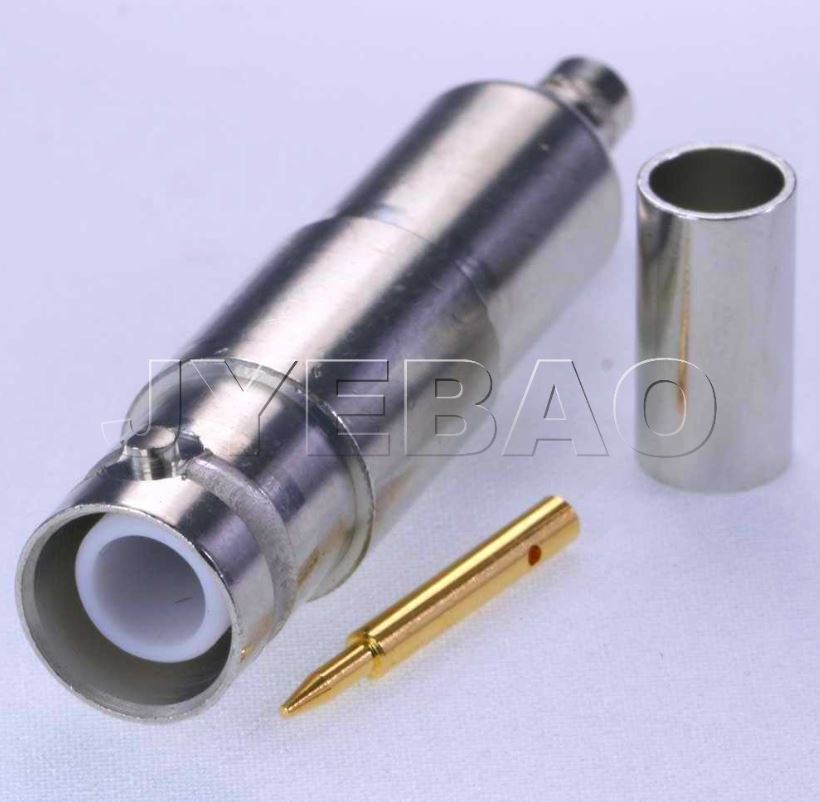
Male RF connector: SHV jack
UHF connectors:
UHF connectors have a threaded coupling that allows them to be tightened sufficiently. This feature enables a good low resistance connection to be made between two halves. These connectors have an impedance of 35 ohm and operate at a frequency of 30 MHz. UHF is a popular RF connector commonly seen in amateur radio, citizens band radio, and marine VHF radio applications.
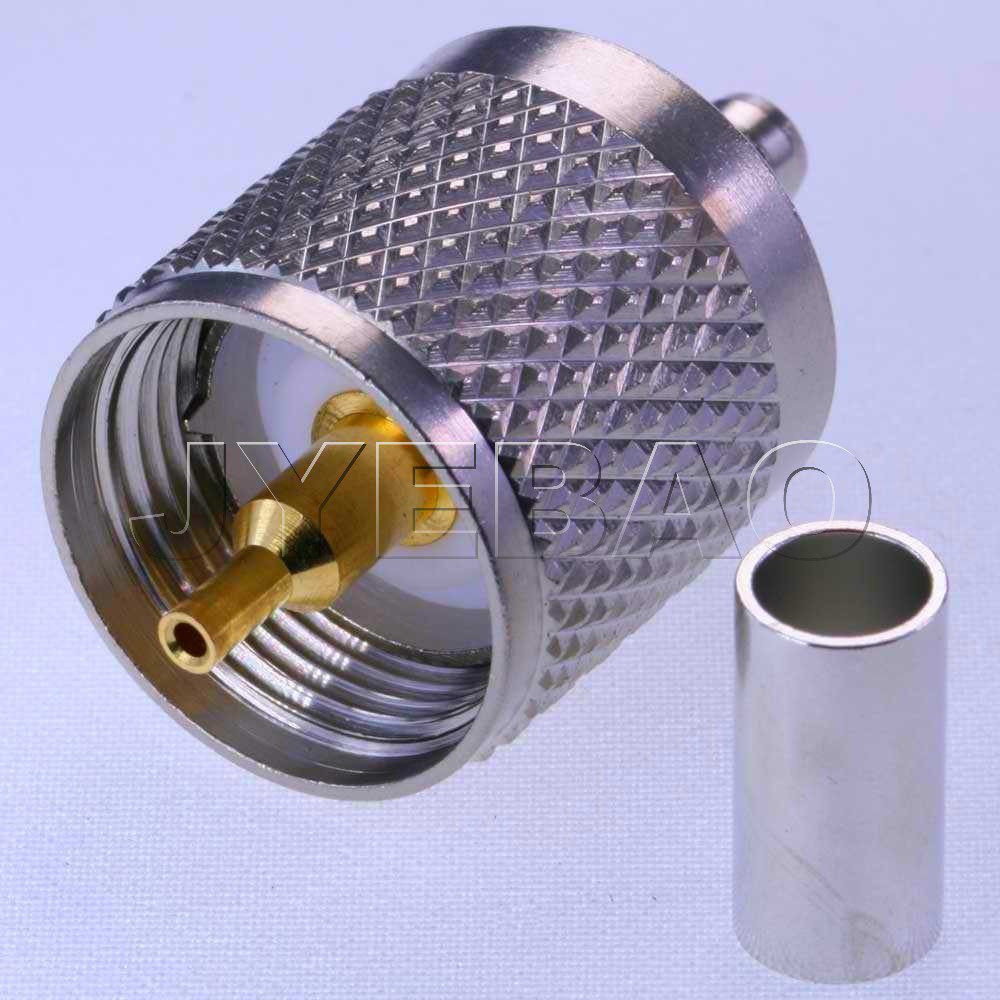
Female RF connector: UHF plug
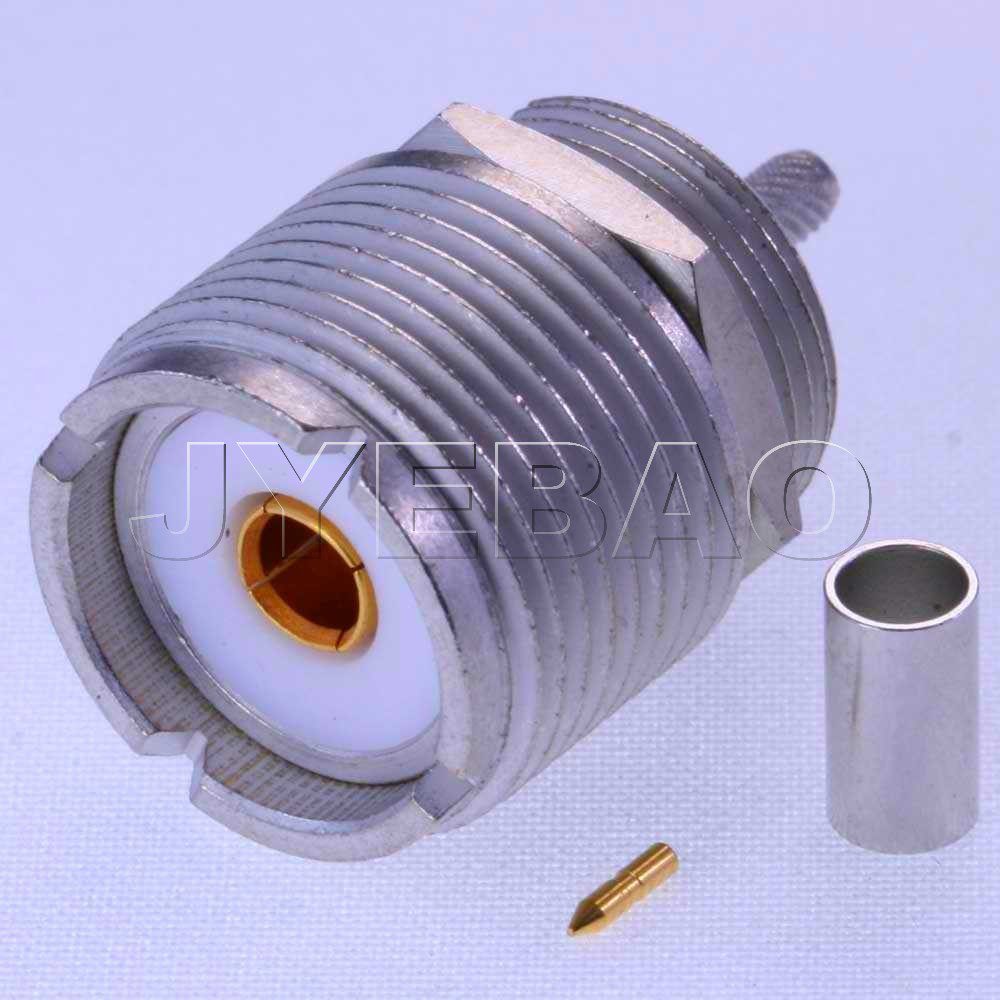
Male RF connector: UHF jack
Microdot connectors:
Microdot was the name of a company, now owned by Tyco electronics, that manufactured small co-axial and multi-pin connectors. This connector has been carefully designed with twist pin contact that enables low engaging force. These connectors are used in small microphones and other transducers and are used in a variety of retail sectors, such as military space, downhole offshore oil and gas, geophysical exploration, commercial satellites, and commercial aerospace.
Please note that this product is sold by another retailer (not Jyebao) and the RFshop could organise delivery of this product.
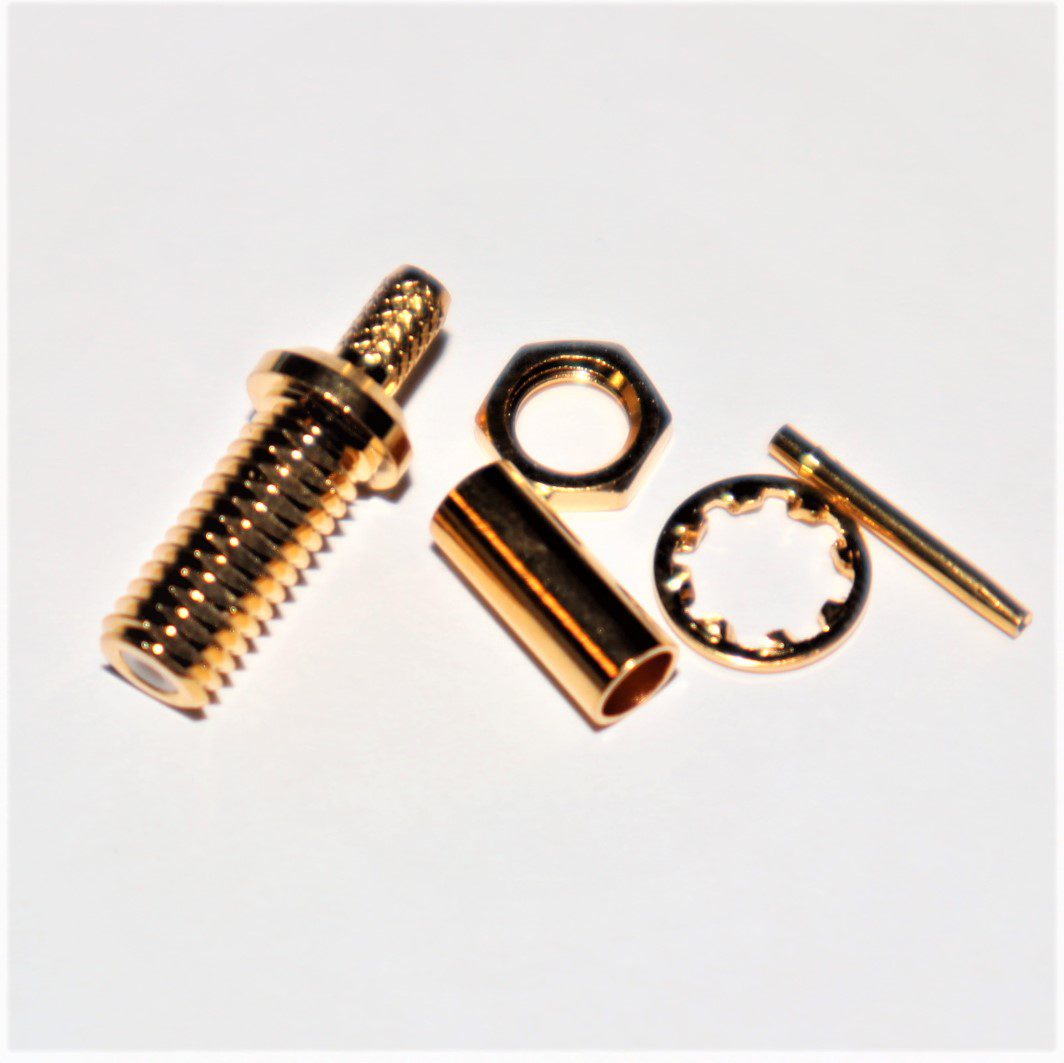
Female RF connector: microdot plug
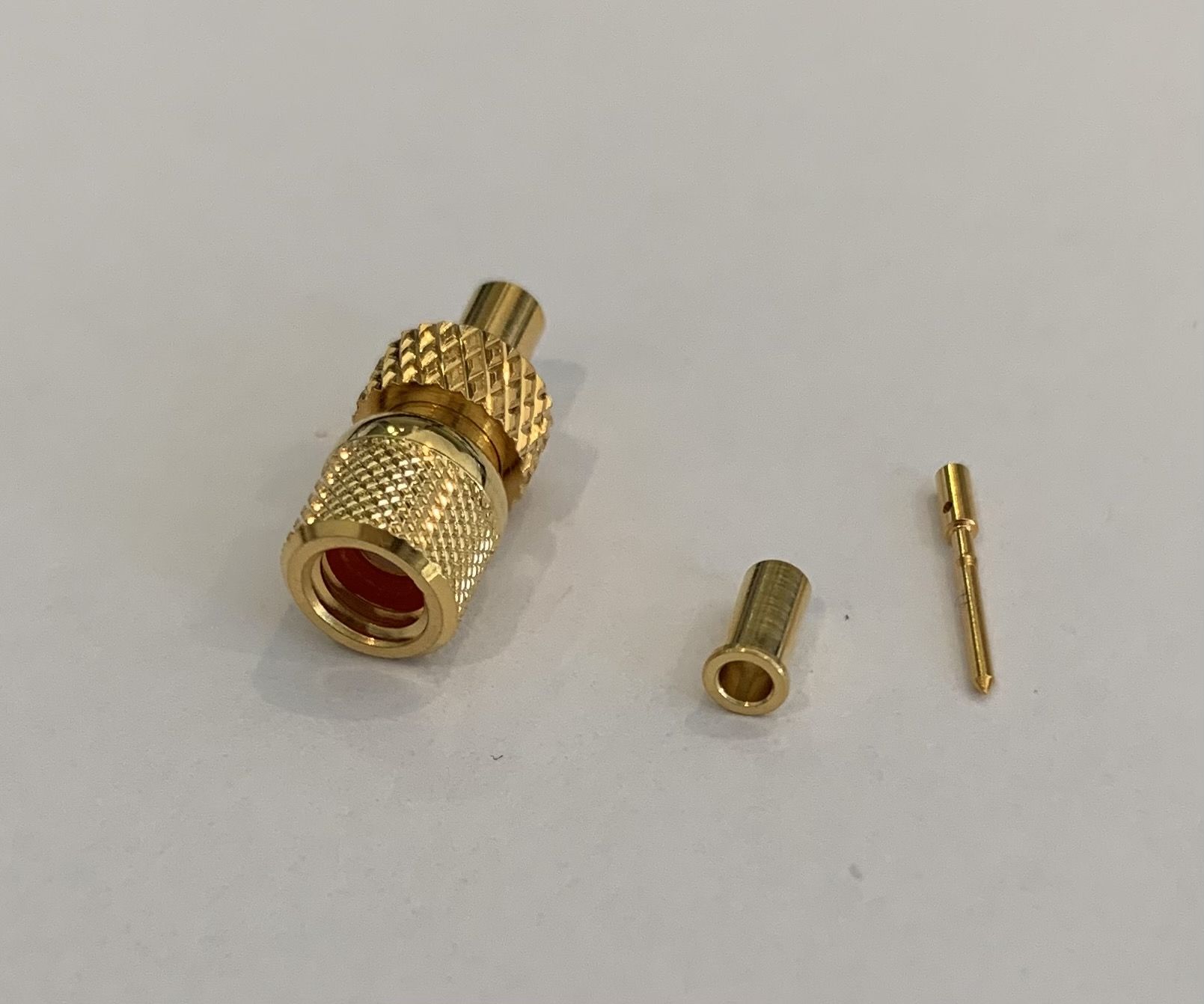
Male RF connector: microdot jack
Adapters:
RF adapters are passive coaxial components that are meant to transfer signals from one connector interface to another interface. A number of factors determine the ideal adapter, such as the connector type, geometry, and frequency at which the adapter operates.
Jyebao manufactures a variety of adapters specially designed to suit different applicaitons. They have a variety of RF adapters on the shelf such as network measurement divisions (NMD) adapters, mitered adapters, low passive intermodulation (PIM) adapters, snap-on adapters, multi-directional adapters, precision adapters (up to 70GHz). Jyebao manufactures both in-series and between series adapters.
Based on the type of connector interface used, these RF adapters are further divided into in series adapters and between series adapters.
In series adapters: In series adapters are those where both ends of these adapters have the same connector interface. The gender of these adapters at either end could be the same or could be different. The geometry of in series adapters could also be designed to suit various applications. For example, shown in the picture is a right-angle in series adapter that has a TNC male interface at one end and TNC female interface at the other end.
For more in series adapters from Jyebao visit https://www.jyebao.com.tw/
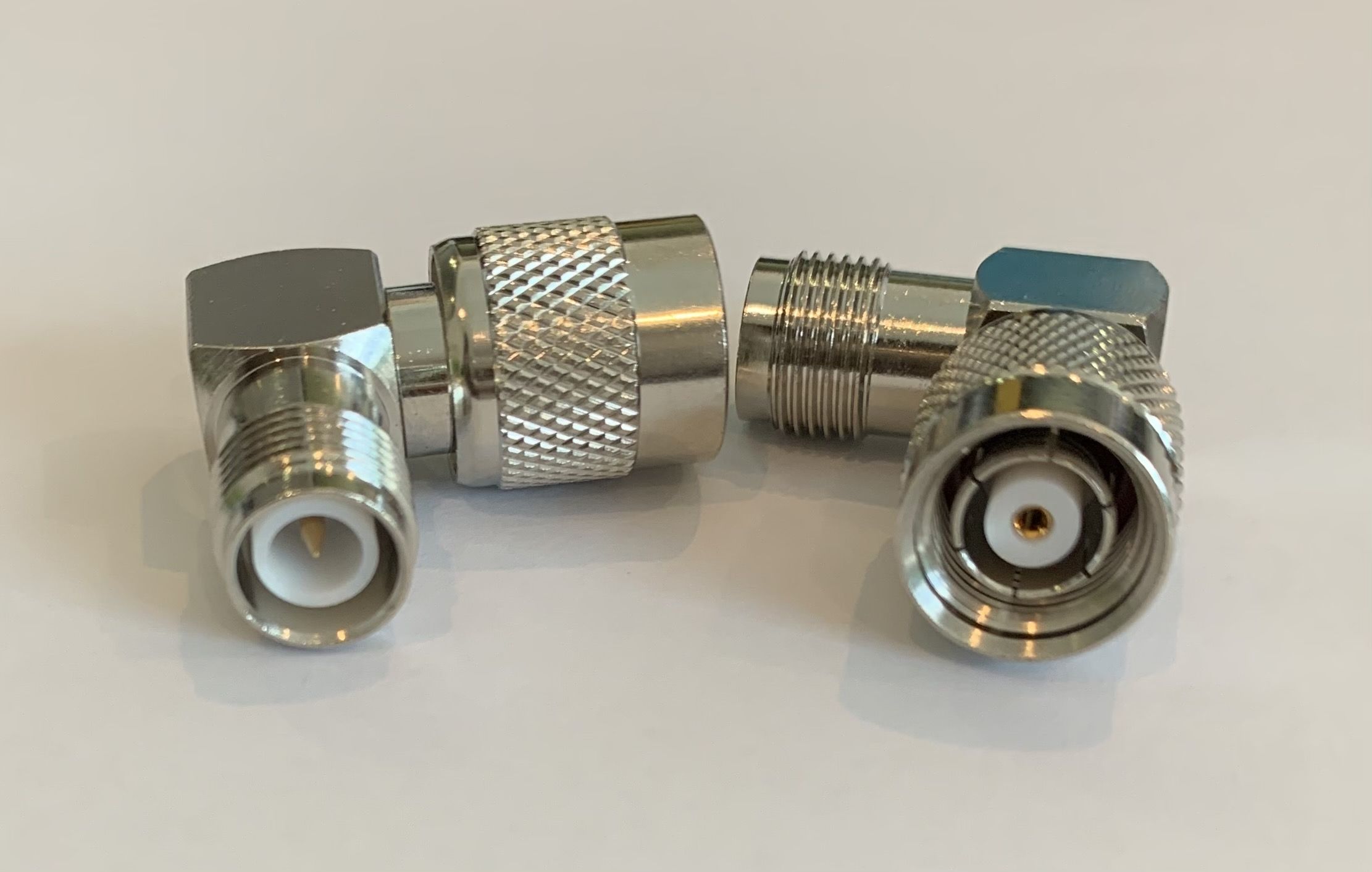
An example of in series adapter : TNC (M) / TNC (F)
Between series adapters: Between series adapters are those where there are different types of connector interface at either end of the adapter. Similar to the in series adapter, the gender of the connector interface could be the same or could different and the geometry of the adapters could be designed based on the application needs. For example, shown in the picture is an SMA male connector interface at one end and a TNC female interface at the other end.
For more between series adapters from Jyebao visit https://www.jyebao.com.tw/

An example of between series adapter: SMA (M) / TNC (F)
